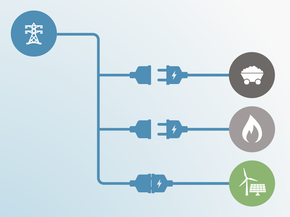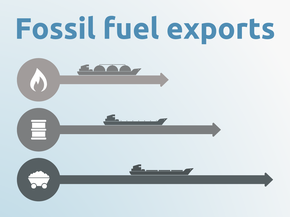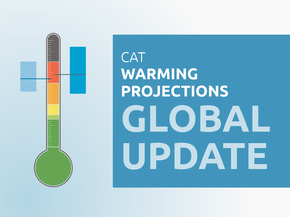Assumptions
Global warming potentials
Previous assessments of the Climate Action Tracker used the global warming potentials (GWPs) from the IPCC’s Second Assessment Report (SAR). For this assessment we have updated all figures and time series to GWPs from the IPCC’s Fourth Assessment Report (AR4).
Historical emissions
Historical emissions for the year 1994, 2000 and 2005 are taken from the UNFCCC GHG Inventory database (UNFCCC, 2017). The UNFCCC dataset contains two errors, one for the year 1994 where agricultural emissions are 54.5 MtCO2e/a in the UNFCCC database while they are 1.8 MtCO2e/a in the 3rd National Communication (Ministry of Energy, 2012), and one for 2005, where fugitive emissions from the energy sector are double counted, once as methane emissions and once as carbon dioxide emissions (each 21.0 MtCO2e). We corrected the values using the data from the 3rd National Communication.
For other years (before 1994 and after 2005), we apply growth rates from different categories of emissions from the GHG inventories, using the following sources for the different categories:
- CO2 from fuel combustion: IEA CO2 emissions database (data available up to 2015) (IEA, 2016a)
- CO2 process emissions:
- EDGAR data as collected in the IEA non-CO2 emissions database (data available up to 2010) (European Commission Joint Research Centre (JRC)/Netherlands Environmental Assessment Agency (PBL), 2013)
- Continuation of historical trend up to 2014
- Non-CO2 emissions:
- EDGAR data as collected in the IEA non-CO2 emissions database (data available up to 2014) (ibid.)
- US EPA projections for 2015 (US EPA, 2012), linear interpolation from 2010 up to 2014
The UAE creates annual GHG inventories (see for example “Electricity insight | Ministry of Economic Development,” n.d.), however we were not able to find these outputs in the public domain and were thus unable to use them here.
Pledges and targets
To quantify the NDC target of 24% of clean energy, we take the following approach (see below). Note that it has not been clear in previous updates whether the NDC refers to total primary energy supply or electricity generation. For this update, we assumed that NDC target is focused on electricity based on a series of supporting documentation (Ministry of Energy, 2015c; The National, 2015; UAE Government, 2018):
- 24% of electricity generation:
- Compare calculation of the Energy Strategy for 2050 below.
- For share of electricity generation of different fuels, we assume that the share of coal and oil develop as under the base scenario, and that gas balances the changes in “clean energy”.
Current policy projections
For the current policy projections, we use the following data sources:
- CO2 from fuel combustion: “Renewable Energy Prospects – United Arab Emirates” (Masdar Institute/IRENA, 2015)
- CO2 process emissions: Own assumption to continue linear trend based on years 1990 to 2010 until 2030.
- Non-CO2 emissions: Global Anthropogenic Non-CO2 Greenhouse Gas Emissions: 1990 - 2030 (US EPA, 2012)
We apply the growth rates of those datasets to our historical data for the year 2014 and sum them.
Two policies are not included in the Masdar/IRENA report: the Energy Strategy for 2050 (WAM, 2017) and the deregulation of prices of gasoline and electricity, which were previously subsidised (IEA, 2015). We consider the Energy Strategy a planned (rather than implemented) policy, and thus do not include the targets in the current policy projections.
The deregulation of fossil fuel prices is included in the current policy projections. To estimate the impact of the fuel subsidies-phase out, we take into account an IISD report that calculates the impacts of subsidy phase-out in the UAE and other countries.1 This report states that national energy related emissions in the UAE would decrease by 14% in 2020 and 12% in 2025 if all subsidies were taken away (Merrill et al., 2015). It is unclear how the reductions relate to the different energy carriers, we thus present a range:
- Lower end: We subtract this amount from our own estimate of energy-related CO2 emissions for 2020 and 2025, and assume for 2030 that there is a linear trend in the reduction rate as given by Merrill et al. (2015).
- Upper end: We apply the percentage given only to emissions related to oil consumption
We assume that there is no impact on other gases.
To estimate the potential impact of the Energy Strategy (considered a planned policy), we take the following approach:
- Determine shares of energy carriers in electricity generation up to 2030: Linear interpolation of shares for different energy carriers between last available year in IEA statistics (IEA, 2016b) and 2050 targets.
- Apply emission factors of electricity generation: Take last available year from IEA statistics and assume 1% autonomous improvement per year.
- Determine total electricity generation up to 2030: Use values from Masdar/IRENA report (Masdar Institute/IRENA, 2015). To reflect energy efficiency target we assume that efficiency improvements are equal for all energy carriers, meaning that electricity is reduced at the same rate as others. This would not work for deep decarbonisation pathways, but the targets do not reflect that,
- Efficiency is measured in total final energy consumption per GDP, and
- Electricity generation equals consumption.
1 | For comparison, the Gulf Cooperative Council members collectively spent around US$51 billion on petrol and diesel subsidies in 2011. In the UAE subsidies amounted to about U$2.4 billion (IISD, 2015).
Further analysis
Latest publications
Stay informed
Subscribe to our newsletter







